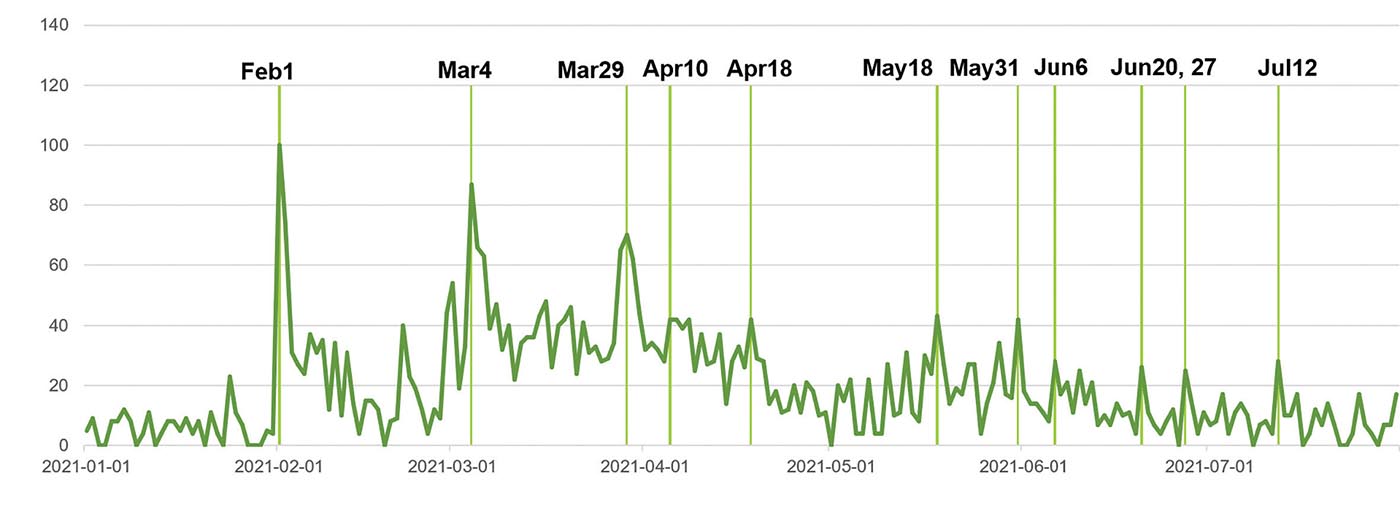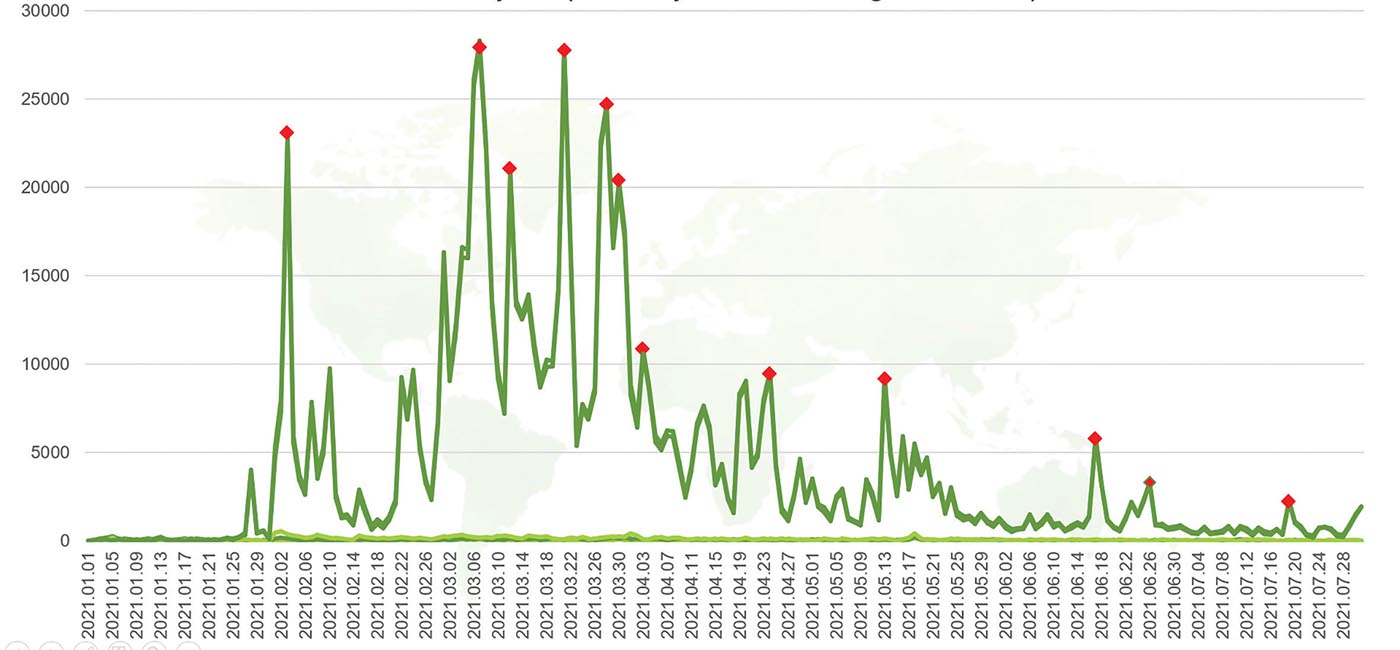Virtual Solidarity with Myanmar in South Korea through Hashtag Activism
Social media has played a critical role in the formation of international solidarity with Myanmar citizens in protesting the Myanmar coup. Due to this, the military junta has prosecuted journalists, and assaults on non-governmental media in Myanmar continue to take place, with the Myanmar military government blocking Twitter, Instagram, etc. However, the citizens of Myanmar and journalists have been braving blackouts and crackdowns to make sure that the world stays focused on what is happening in the country. For example, on June 14, Cape Diamond, a journalist covering Myanmar for global media outlets, tweeted the link to a Human Rights Watch report covering violence by the country’s military. Within hours, more than 2,000 quoted tweets and retweets, mostly in the form of hashtags, were circulated throughout the world.
In South Korea, solidarity with Myanmar in the form of hashtag activism has been strong. Many Koreans have expressed ongoing, enthusiastic support for the Myanmar civil disobedience movement. One way of delineating South Korean civil society’s solidarity activities supporting the Myanmar civil disobedience movement is by analyzing Google search trends and social media trends.
An analysis of Google searches on Myanmar within South Korea, prior to and after the Myanmar coup, shows that search numbers peaked on the day of incident [Fig. 1]. The second spike occurred the day after the first massacre on March 4, when at least 39 people were killed. The third spike dates to March 29, when the military killed more than 100 anti-coup protesters in Myanmar. After doing so, military generals threw a party to celebrate Armed Forces Day, angering many Koreans. On April 10, Myanmar security forces killed over 80 citizens with rifle grenades in an infamously violent incident, and Google searches for Myanmar spiked once again.
The spatial patterning of Google searches on Myanmar within South Korea reveals that, of all the provinces and major cities, the city of Gwangju witnessed the highest number of searches. This is significant because Gwangju is where a pro-democracy movement was suppressed by the military junta in 1980, during which hundreds of citizens were killed or went missing. It appears that the current demonstrations taking place in Myanmar, protesting the coup and the military’s violent crackdowns, are not something that the people of Gwangju can ignore. Noting the similarities between the May 18 Gwangju Democratic Uprising that arose 41 years ago and the ongoing Civil Disobedience Movement in Myanmar, Gwangju citizens have been voicing solidarity with Myanmar citizens and carrying out various activities to support the Southeast Asian country’s pro-democracy movement.
In terms of social media, 877,068 data points were collected for the period spanning from January 1 to July 31, 2021. The data points include tweets, YouTube and Instagram uploads, and news articles, with tweets accounting for 98% of these data points. Interestingly enough, the pattern for peaks in social media interest in Myanmar was found to differ from the patterns for Google searches [Fig. 2]. This may be because Google searches tend to represent the seeking of information by the public, whereas social media posts represent people’s reaction to events and opinion forming.

Fig. 1: Graph showing the Google Search Trends for Myanmar from users based in South Korea (Jan 1 - July 31, 2021).

Fig. 2: Graph showing the Social Media Analysis Trends for Myanmar from users based in South Korea (Jan 1 - July 31, 2021 - Twitter, YouTube, Instagram, News).
Tweets about Myanmar increased by 1800%, compared to the same period of the previous year. Interestingly enough, the number of social media posts was higher on Myanmar on March 7, a day after the South Korean President Moon Jae-in talked about the Myanmar situation, compared to the number of posts from March 4, when the first massacre of Myanmar demonstrators took place. President Moon had written on social media that “The use of violence against the people of Myanmar must stop now. There should be no more loss of life.” The peak in social media interest in Myanmar remained strong for several days, possibly fueled by events such as the show of solidarity that took place in Gwangju every Saturday in March by more than 100 civic organizations. March 22 witnessed another peak of interest. Events that preceded this peak include the March 12 public demonstration by Buddhist monks and Myanmar activists, who marched from Myanmar’s embassy in Seoul to the office of the UN Human Rights Council, where they prostrated themselves. That same day, the Ministry of Justice announced that special stay permits would be given to Myanmar nationals on humanitarian grounds.
The patterns present in the Google search trends and social media trends indicate that South Koreans have consistently shown interest in the Myanmar fight for democracy, but there have been fluctuations in the degree of that interest. An interesting fact revealed though the analysis is that the degree of interest shown by Koreans has been heavily influenced by statements made by the Korean government, public figures, civil organization protests, as well as the tragic violence by the military junta.
Jungwon Huh, HK Research Professor, Seoul National University Asia Center, jwhuh@snu.ac.kr